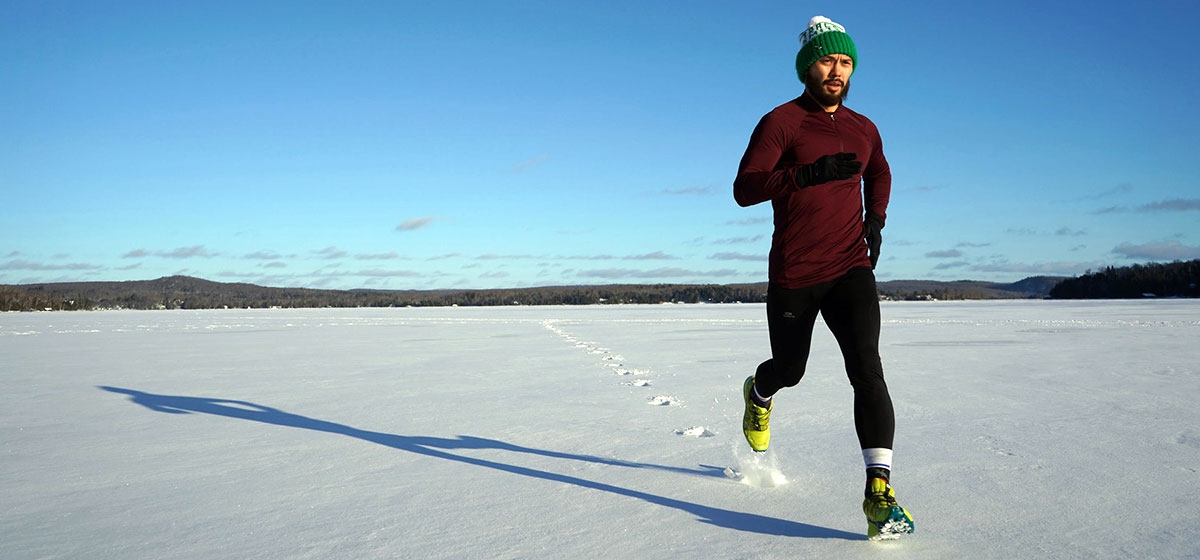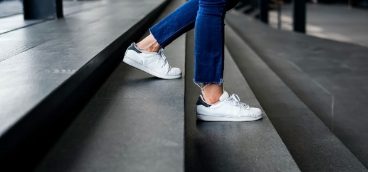
Question: “Is it dangerous to exercise outdoors in extremely cold temperatures? I like to walk and jog year-round and am worried that breathing frigid air can cause lung damage.”
The human body is designed to function in cold weather and has mechanisms that ensure the air we breathe is at body temperature and humidified when it reaches our lungs. While excessive breathing of cold air through the mouth may cause mild irritation, it poses no real threat of damage. Our body also has built-in safeguards designed to conserve heat and increase heat production in cold environments. The most common of these mechanisms is shivering—the involuntary contraction and relaxation of skeletal muscles when the body senses a decrease in either skin or blood temperatures. Shivering keeps us warm by increasing the body’s resting rate of heat production.
That said, any environmental condition that causes significant loss of body heat is a potential threat to our health. Extremely cold weather is one of those conditions. Humans must maintain a core body temperature within relatively narrow limits. When core temperature drops below the threshold, we may experience hypothermia or frostbite.
Symptoms of hypothermia include intense shivering, slurred speech, loss of coordination and general fatigue. If core temperature dips below 94 degrees Fahrenheit (normal is 98.6 degrees), the hypothalamus—a portion of the brain that coordinates the autonomic nervous system—loses its ability to regulate body temperature. Metabolism slows and drowsiness, or even coma, may occur. This is the sensation that often overcomes mountain climbers exposed to the elements in sub-arctic conditions.
Frostbite poses a somewhat different problem. Exposed skin can freeze when its temperature is lowered below 32 degrees Fahrenheit (0 degrees Celsius). In this situation, the body kicks into survival mode and attempts to prevent further heat loss by reducing blood flow to the skin, which causes the area to cool even more rapidly. Frostbite is most common on exposed skin such as your cheeks, nose and ears, and can also occur on hands and feet. Early warning signs include numbness, loss of feeling or a stinging sensation. Continued exposure causes the skin tissue to die from lack of oxygen and nutrients. If you suspect frostbite, immediately get out of the cold and slowly warm the affected area—but don’t rub it because that can damage your skin. Seek emergency care if numbness doesn’t go away.
Despite the potential dangers, you don’t have to let cold weather prevent you from continuing with your normal workout routine. For most people, exercising in cold weather is safe if you take the necessary precautions and follow common sense guidelines. However, if you have medical conditions such as asthma or heart problems, check with your doctor first. The following tips can help you stay safe and warm when exercising in the cold.
Be aware of windchill
Air temperature alone is not always an accurate estimate of coldness. Windy conditions coupled with low temperatures, known as “windchill,” increases the rate of heat loss. The potential for thermal stress is even greater when there is moisture in the air. Getting wet makes you more vulnerable to the cold. I experienced this situation first-hand many years ago while climbing Mt. Washington in New Hampshire’s White Mountains. Mt. Washington, standing at 6,288 feet, is the highest peak in the northeastern United States and boasts some of the nation’s most severe weather. The second-highest surface wind speed ever officially measured in the United States, 231 mph, was recorded at the Mt. Washington observatory. When a friend and I began our hike up the mountain at 10 a.m., the temperature was 60 degrees Fahrenheit. By mid-afternoon the winds picked up and the temperature had dropped more than 20 degrees. As we climbed above the tree line, moisture-laden clouds whipped horizontally across the rocky slopes. We were soon dripping wet and freezing cold. I can still recall that my hands were so cold and fingers so numb that I could not unzip my pack to get my pocket watch. We were fortunate to arrive at an Appalachian mountain hut before ending up in more serious trouble.
Dress in layers
Several layers of light clothing can provide an insulating cushion of air that can help to retain body heat. A thin layer of synthetic material, such as polypropylene, draws sweat away from your body and is a good choice for the initial layer. Avoid cotton, which stays wet next to your skin. Next, add a layer of fleece or wool for insulation. Top this with a waterproof, breathable outer layer. You may need to experiment to find the right combination of clothing for you based on your exercise intensity. If you’re slim, you may need more insulation.
Protect extremities
Blood flow is concentrated in the body’s core when in extreme cold weather which leaves your head, hands and feet vulnerable to frostbite. Wearing a hat will slow loss of body heat and protect your ears as well. If it’s very cold, consider wearing a scarf or ski mask to cover your face. Wearing a thin pair of glove liners under a pair of heavier gloves or mittens lined with wool or fleece will keep your hands warm. Thermal socks, or an extra pair of regular socks, are recommended.
Hydrate!
It is important to drink plenty of fluids when exercising in cold weather just as you would in hot weather. You can become dehydrated from sweating, the drying power of the winter wind and increased urine production, but it may be less noticeable during cold weather. Consume water or sports drinks before, during and after exercise, even if you don’t feel thirsty.




